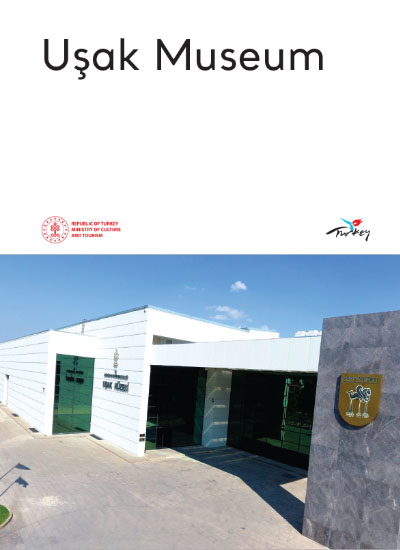The Uşak Museum was inaugurated on 23 May 1970 and, after serving in the same building for 48 years, relocated to a new facility in the train station area in 2018. The museum's collection comprises 42,000 artefacts spanning various historical periods, including the Palaeolithic Age, Bronze Age, Phrygian, Lydian, Hellenistic, Roman and Eastern Roman periods. The exhibition halls of the museum contains a variety of artefacts from different historical periods. These include chisels, scrapers and flake fragments from the Palaeolithic Age, idols representing the Bronze Age, beak-mouthed jugs, stone axes, terracotta bowls, plates, oil lamps, figurines and glass samples from the Phrygian, Lydian, Hellenistic, Roman and Eastern Roman periods. Immediately behind the chronological showcases, the cult and beliefs of ancient burial customs are presented to the visitors. In the sculptures section, there are sculptures of people such as administrators, statesmen and sportsmen from the Roman period found within the borders of Uşak. In another section on the same floor, stone artefacts found in ancient cities such as Akmonia, Blaundos and Sebaste within the borders of Uşak are exhibited. Given that Uşak is situated within the boundaries of the Lydian State, the earliest known minting and use of money in antiquity, the museum boasts a rich coin collection. On the mezzanine floor of the museum, coins and coin treasures from various periods are exhibited with various animations on topics such as the minting and use of money. The second floor of the museum is dedicated to the Karun Treasures, which are regarded as the most magnificent artefacts of the Lydian-Persian period. The artefacts were excavated from the Lydian Tumuli near the Güre Village, located 25 km west of Uşak on the Izmir highway, and smuggled abroad in the 1960s. They were retrieved in 1993 and now displayed in the museum. The artefacts are divided into two sections. The first section contains the artefacts found in the Basmacı, Toptepe and Aktepe tumuli. At the very back is the winged seahorse brooch, the rarest of these groups. It was brought to Turkey from Germany and exhibited in its homeland. In the other part of this floor, there are reenactments of the Lydian İkiztepe and Harta tumuli, as well as reenactments of trade, weaving, ceramics and mould making during the Lydian Period. Additionally, a section describing the daily life of the period is located in this area. In the ethnography section, the local ethnography of Uşak is elucidated through the display of various garments, weapons and other materials utilised in daily life. Furthermore, the museum encompasses an educational area for children, a foyer and a conference hall, in addition to a library containing specialised books.
UŞAK MUSEUM

